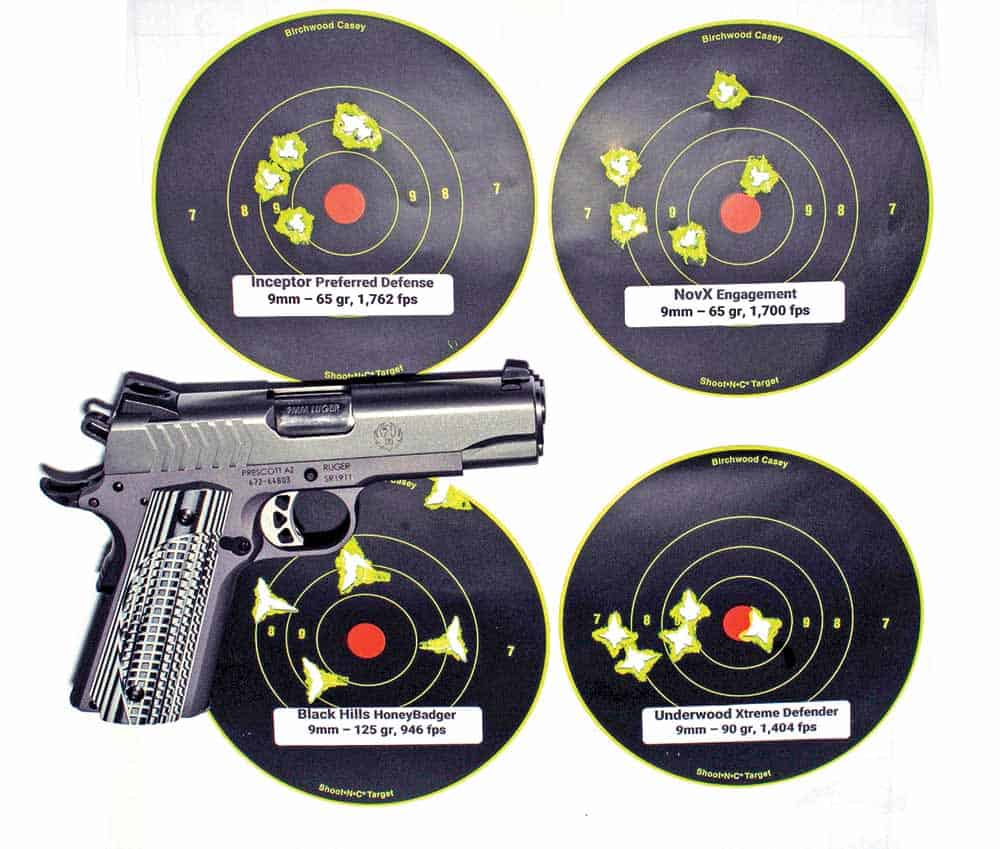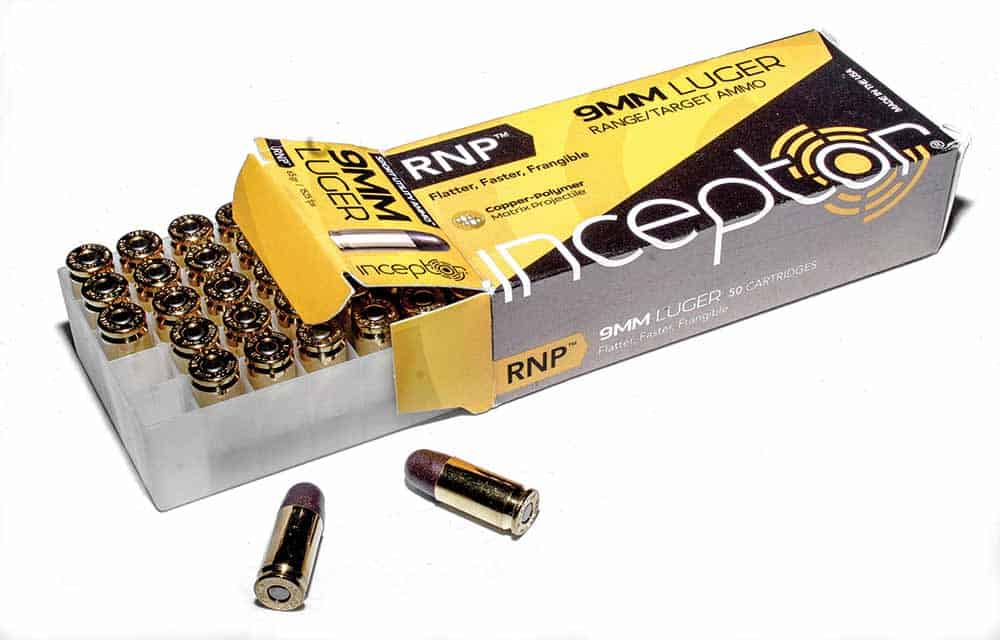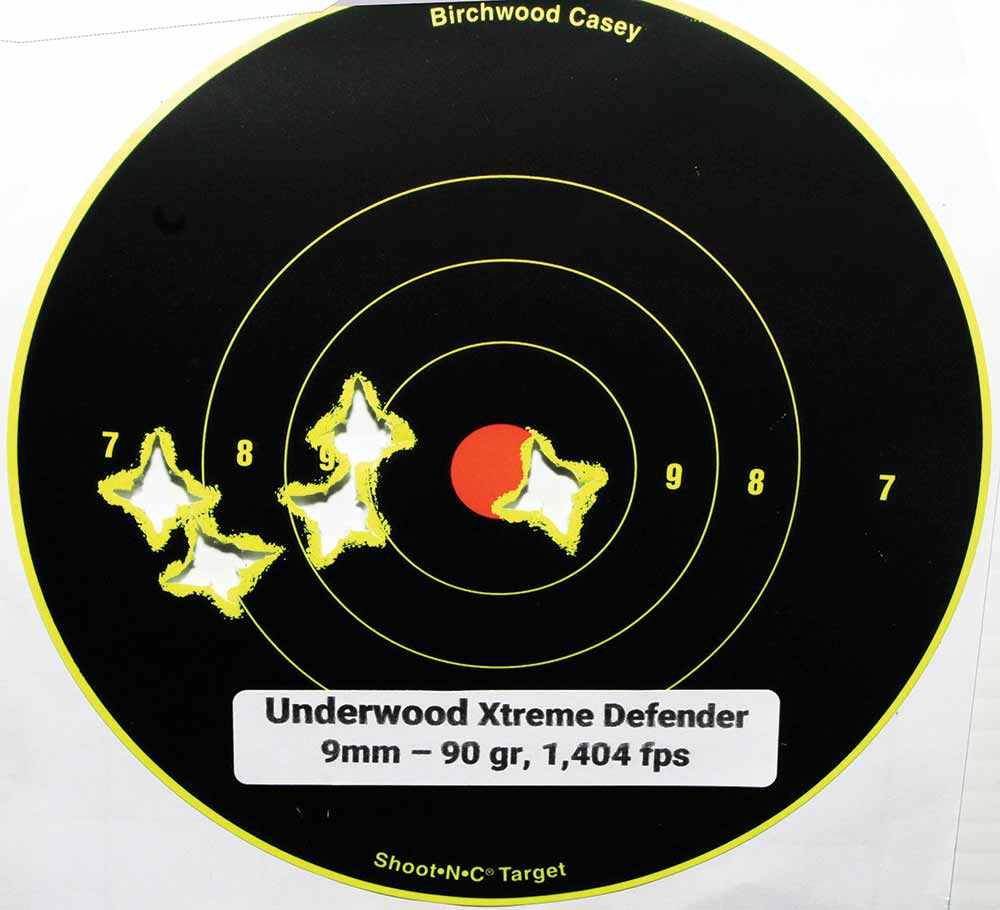Fluted Ammo: Great Or Gimmik?
A Different Spin On Defense Bullets
I first became acquainted with the new fluted bullet designs for defensive ammo in the latter part of 2015 with the introduction of ARX ammunition, originally co-branded by Polycase and Ruger. The original ARX ammunition is now branded as Inceptor ARX and is manufactured and distributed by RUAG Ammotec USA. They are also the distributors of Norma, Geco and Swiss P ammunition, along with being manufacturers of the Geco and Inceptor brands here in the U.S.
More Speed, Less Recoil
Why am I interested in fluted bullets? As a handgun instructor and someone who carries a concealed pistol every day, I research defensive ammo on a regular basis. When I’m making a recommendation to students and determining what to carry in my own gun, I want to know what will do the job and what won’t. With so many excellent brands of JHP handgun ammo on the market, there was something in particular about this new type of ammo which attracted my attention: the promise of low recoil while still offering effective wound ballistics. The projectiles are light and need less propellant to make them travel very fast.
The flutes have no effect on mechanical operation within the gun or stability in flight. Once the bullet reaches the target, the rotation of the fluted design traveling at a high velocity causes havoc. The spinning flutes create lateral dispersion of energy with the forward dispersion along the bullet’s path causing a significant wounding effect.
Why is lighter better? Think of it in terms of energy, not just weight. On average, the Advanced Rotation eXtreme (ARX) bullet from Inceptor Ammunition weighs about 2/3 the weight of comparable lead-core bullets, which results in a higher velocity. These bullets carry more energy than typical JHPs of the same caliber, yet produce much less recoil. For me it’s been the deciding factor because I’ve become much more recoil-sensitive in my senior years yet I’m not interested in a small-caliber pistol for personal protection.
Brands, Patents, Differences
I’d shot a lot of the ARX rounds before some of the others came to market. When competing bullets started appearing, I was a little concerned the inventors of ARX bullets were having their patents encroached upon. I had the opportunity to ask Tim Kennedy, Brand Ambassador for the Inceptor Line. Tim showed me a spec sheet for the NovX 9mm cartridge and assured me Inceptor supplies the projectiles for the NovX cartridges. NovX loads them in stainless steel cases. Both brands also sell practice rounds utilizing an Inceptor-manufactured RN version of the copper/polymer blended material. The practice rounds are less expensive and great for practice since they mimic the recoil and point of impact of the defensive rounds.
When I asked Tim about Black Hills HoneyBadger, he said they weren’t using the ARX-patented design. This led me to research the patents, so I could understand the differences.
The ARX patent now held by RUAG Ammotec USA lists the inventors as Retired U.S. Army Lt. Col. Paul Lemke, along with Juan Carlos Marin and Steven Eric Johnson. Col. Lemke is now General Manager for RUAG Ammotec USA. The patent was filed on September 24, 2014, and awarded on March 21, 2016. The drawings — and an examination of the actual bullets — show three notches as viewed from the top. The relative size and spacing of the notches, as well as the shape of the bullet’s nose, are all part of the patent. The patent also includes the materials and manufacturing method of the projectiles, which have a unique makeup consisting of a heated mixture of powdered copper and epoxy/polymer resin, pushed through high-pressure injection molding. Excess material is ground up and reused, resulting in minimum waste. These projectiles have been manufactured in all handgun calibers in normal use from .380 up through .45 (and in multiple rifle calibers as well), all carrying the Inceptor ARX brand.
The second patent of interest belongs to Lehigh Defense, LLC, of Quakertown, PA. Its inventor is David B. Fricke, CEO of Millennium Manufacturing Inc. The patent was filed on September 12, 2014, and awarded on January 26, 2016. I find it interesting these two patents were being worked by the U.S. Patent office practically side by side. Enough differences were found to award two separate patents. Lehigh bullets are available for reloading and are used in at least two brands of handgun ammo — Black Hills and Underwood.
What’s different about the Lehigh projectiles? Well, they’re solid copper, have four flutes rather than three with a small flat area on the nose. The patent diagrams show it as flat, but apparently a slight indention as done in the Underwood 9mm and .45 does not alter the patent. This fluted design creates the same kind of wound damage as the ARX bullets do. None of these projectiles expand. In fact, testers have found multiple bullets with no damage at all after creating enormous simulated wound channels in ballistic gelatin. These recovered bullets can often be reloaded and used again.
Rangework
I decided to test the four brands of fluted ammo currently on the market — Inceptor and NovX (using the ARX bullet), Black Hills and Underwood (using Lehigh’s fluted bullet). All four companies offer 9mm cartridges and three of the four make .45 ACP. As of this writing, NovX has not released a .45 ACP offering. Most of the brands are available in other calibers, but I wanted to keep the comparison as fair as possible by using both a 9mm and .45 ACP Lightweight Ruger Commander.
Although my trip to the range produced no surprises in the accuracy or reliability department, I was surprised by the fact all my chrono readings met or exceeded those advertised. Inceptor’s .45 ACP 118-gr. ARX clocked 1,307 fps. The Black Hills HoneyBadger 135-gr. .45 ACP chronographed 1,208 fps, while the other .45 ACP round — Underwood’s 120-gr. XTreme Defender — clocked 1,340 fps. These loads are all obviously very fast for .45 ACP defensive rounds, which rarely break 1,000 fps.
The 9mm offerings were similarly speedy, with the Inceptor ARX and NovX 65-gr. bullets both traveling at over 1,700 fps. The Underwood Xtreme Defender 90-gr. bullets clocked at 1,404 fps, while the Black Hills HoneyBadger 125-gr. bullets (more in line with the weight of conventional 9mm rounds) averaged 946 fps. Each of the brands except the HoneyBadger have +P offerings but for testing I kept to standard-pressure loads.
My accuracy test was done at 15 yards, which is what I consider the max for handgun fighting and the max for my eyesight and hand/eye coordination. I shot freehand but braced against the range divider a couple of times for stability. The 9mm results were 1.75″ groups for the Inceptor ARX, 2.5″ groups for the NovX, 3.75″ groups for the Black Hills HoneyBadger and 2.25″ groups for the Underwood Xtreme Defender. For the .45s the results were 3.5″ for the Inceptor ARX, 2.75″ for the Black Hills HoneyBadger and 3.8″ for the Underwood Xtreme Defender. The Underwood 9mm cut a 4-point star-shaped design as it struck the Birchwood Casey Shoot-N-C.
One of the first concerns voiced about this type of round was a fear of over-penetration. Results in 10 percent ballistic gelatin shows ARX and Lehigh bullets produce large temporary cavities when striking soft targets through rotational and lateral transfer of energy. As this energy is being transferred laterally, the forward motion stops, usually within 16″. Unlike JHPs there is no chance of cavity plugging by denim, leather or other material prior to entering the target.
I was already sold on the Inceptor ARX rounds and have been carrying them in my daily-carry .45 ACP for a couple of years now. I also carry it in a 9mm on the days I decide to pack a 9. And my house guns, all police trade-in S&W M&Ps in .40 S&W, are loaded with Inceptor ARX.
Final Notes
I’ve shot well over 2,000 rounds and have only had one issue, which I consider a fluke (or maybe a “fluted fluke”). It was a failure to chamber in a Remington R1 because one of the flutes in the nose hung up on the internal portion of the slide stop. It’s very strange because the top round in the slide appears to be slightly above the protrusion as I look at it. I’ve run a couple hundred rounds of ARX ammo through the R1 since the initial hang-up and never had it happen again.
Ultimately, this is ammunition you can count on for large caliber effectiveness while treating your hands to “smaller-caliber” recoil.










